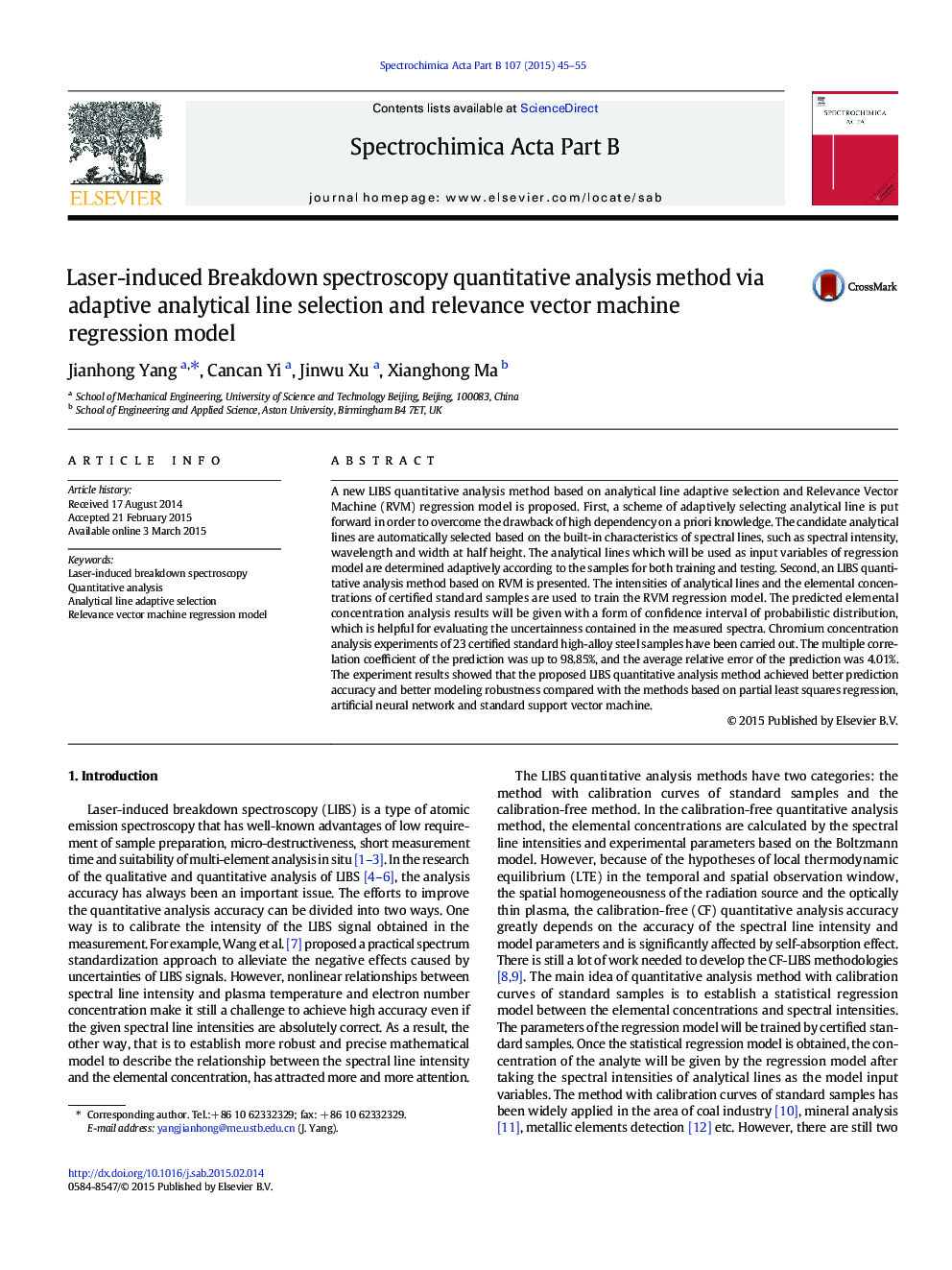| کد مقاله | کد نشریه | سال انتشار | مقاله انگلیسی | نسخه تمام متن |
|---|---|---|---|---|
| 1239620 | 1495696 | 2015 | 11 صفحه PDF | دانلود رایگان |
• Both training and testing samples are considered for analytical lines selection.
• The analytical lines are auto-selected based on the built-in characteristics of spectral lines.
• The new method can achieve better prediction accuracy and modeling robustness.
• Model predictions are given with confidence interval of probabilistic distribution.
A new LIBS quantitative analysis method based on analytical line adaptive selection and Relevance Vector Machine (RVM) regression model is proposed. First, a scheme of adaptively selecting analytical line is put forward in order to overcome the drawback of high dependency on a priori knowledge. The candidate analytical lines are automatically selected based on the built-in characteristics of spectral lines, such as spectral intensity, wavelength and width at half height. The analytical lines which will be used as input variables of regression model are determined adaptively according to the samples for both training and testing. Second, an LIBS quantitative analysis method based on RVM is presented. The intensities of analytical lines and the elemental concentrations of certified standard samples are used to train the RVM regression model. The predicted elemental concentration analysis results will be given with a form of confidence interval of probabilistic distribution, which is helpful for evaluating the uncertainness contained in the measured spectra. Chromium concentration analysis experiments of 23 certified standard high-alloy steel samples have been carried out. The multiple correlation coefficient of the prediction was up to 98.85%, and the average relative error of the prediction was 4.01%. The experiment results showed that the proposed LIBS quantitative analysis method achieved better prediction accuracy and better modeling robustness compared with the methods based on partial least squares regression, artificial neural network and standard support vector machine.
Journal: Spectrochimica Acta Part B: Atomic Spectroscopy - Volume 107, 1 May 2015, Pages 45–55
